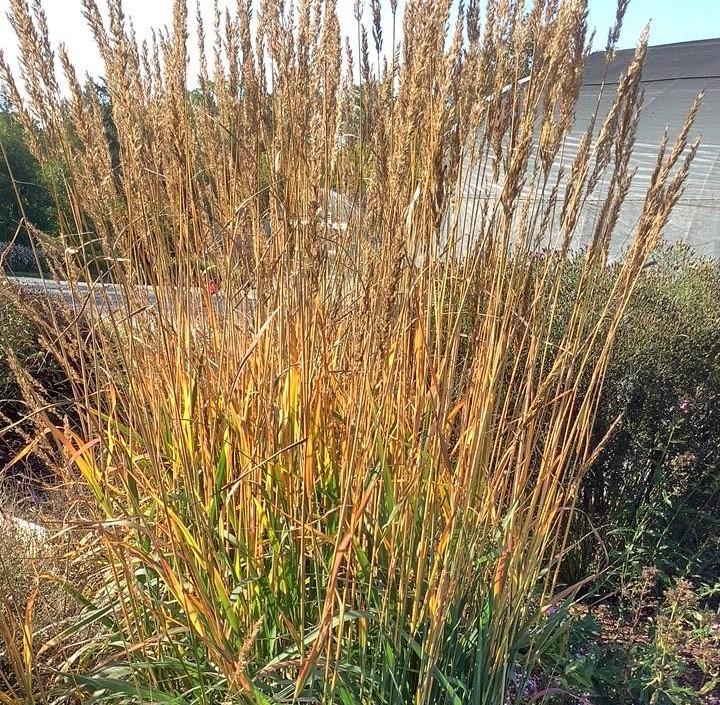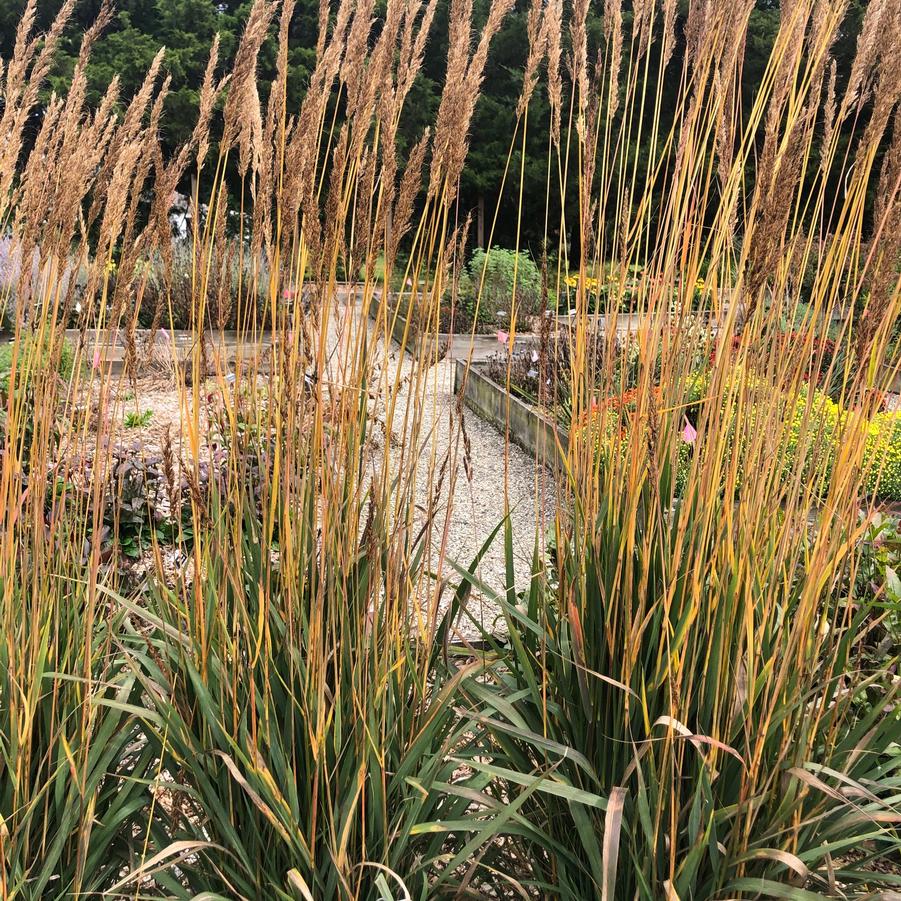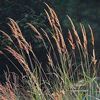



Plant Calculator
Enter the approximate length and width of the area you will be planting and click 'Calculate' to determine how many Sorghastrum nutans Golden Sunset® 'MNYG318153' you will need.
Correct and successful spacing is complex and depends on project conditions. We encourage you to call us at 877-ECO-PLUG for project specific recommendations and further assistance.
Sorghastrum nutans Golden Sunset® 'MNYG318153'
yellow prairie grass
- Category: Grass
- Patent: PP33776
- Hardiness Zone: 3-9
- Height: 4-6 Feet
- Spread: 36 Inches
- Spacing: 2-3 Feet
- Bloom Color: Yellow
We have had Golden Sunset® yellow prairie grass in our trials for a couple of years and couldn't believe how well it performed. Early flowering with gorgeous golden flower plumes, this Sorghastrum nutans selection from University of Minnesota produces hundreds of flowering stems to create a real show in the fall. It also has a very upright habit that does not lodge or fall over like the straight species tends to do.
Click here to download technical information for growers:
Wetland Indicator Status
| • | Falcutative Upland (FACU) |
Attributes
| • | Native to North America |
| • | Drought Tolerant |
| • | Salt Tolerance |
| • | Clay Tolerance |
| • | Cut Flower |
Propagation Type
| • | Vegetative |
Grass Type
| • | Warm Season |
Additional Information about Sorghastrum nutans Golden Sunset® 'MNYG318153'
First selected in 2005, and since 2010 propagated and trialed in several locations in Minnesota and the Midwest, Golden Sunset® was selected for its upright stature, clean olive-green foliage and numerous early yellow and golden-bronze flowers.
Golden Sunset® flowers first emerge in mid-August and remain attractive through the winter. Unlike most yellow prairie grass, Golden Sunset® remains upright and does not lodge or fall over. This new patented grass from the University of Minnesota will be a good addition to landscapes throughout the U.S. but especially in northern climates.
Sorghastrum nutans is a vigorous native warm-season, clump-forming grass growing 3-8’ tall and 1-2’ wide with bluish-green foliage turning a translucent yellow-deep gold fall color and bearing beautiful panicles of copper. In the early summer, the height stays around 3’ high but the plant sends up tall panicles of flowers that turn into golden seedheads. One of the four dominant warm-season grasses found in a tallgrass prairie with Schizachyrium scoparium, Andropogon gerardii, and Panicum virgatum; Sorghastrum nutans works well as an accent in landscapes, especially when substituting North American native species over exotic ornamental grasses such as Miscanthus, fountain grass, or pampas grass.
Yellow prairie grass is adaptable to a wide range of soils, but prefers rich, silty-loams in full sun. It is tolerant of drought, cold, acidity, salinity, and heavy clay soils. Ranging from Quebec and Maine to Manitoba and south to Florida and Arizona and further south still to the Chiapas in Mexico, Sorghastrum nutans can be found in prairies, open woods, fields, and dry slopes. This plant self-seeds readily and in highly-managed landscapes, a cut back after flowering reduces spread by seed. It is an essential component in most North American grasslands and performs best when intermixed with native cool season and warm-season grasses and assertive wildflowers. Yellow prairie grass is very competitive and will easily create a dense monoculture if comparably assertive species are not interplanted.
Sorghastrum nutans is a larval host plant of the specialist pollinator Pepper-and-Salt skipper butterfly and several grasshoppers and leafhopper species. When it is in active growth, yellow prairie grass makes a nutritious pasture grass rich in protein and vitamin A, making it wonderful for bison and cattle. The tall seed heads and dense clumps allow a private nesting area for many prairie-dwelling birds Ring-necked pheasant and Mourning dove.
Growing & Maintenance Tips for Sorghastrum nutans Golden Sunset® 'MNYG318153'
Cut back in late winter or early spring. It is best used as an accent, in naturalized meadow gardens, in the perennial border or utilized for erosion control and restoration.

